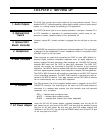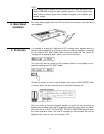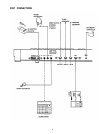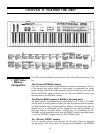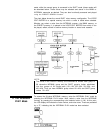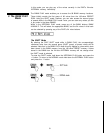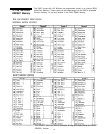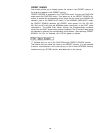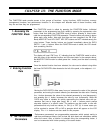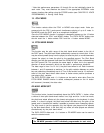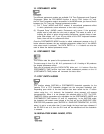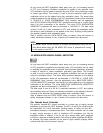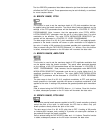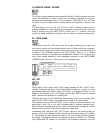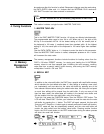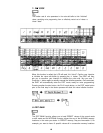
CHAPTER III: THE FUNCTION MODE
The FUNCTION mode permits access to four groups of functions:
tuning functions, MIDI functions, memory
management functions, and performance functions. In this chapter we’ll describe each of these functions; what
they do and how they are programmed.
The FUNCTION mode is called by pressing the FUNCTION button. Individual
1. Accessing the
parameters to be programmed are then called by pressing the appropriate voice
FUNCTION Mode
button. Note that when the FUNCTION mode is active, pressing a voice button
calls the corresponding FUNCTION parameter. These functions are printed in brown
below each voice button. Note also that there are two exceptions: the PB (Pitch
Bend) MODE SET and KEY SHIFT KEY SET buttons are NOT included among the
voice buttons. These function buttons are located immediately above the DATA
ENTRY -1 and +1 buttons. When the FUNCTION mode is called, the LCD should
look something like this.
The display will read “FM.Tune= 0,” indicating that the FUNCTION mode is active,
plus the name of the selected function and its current data: In the example above,
the MASTER TUNE function is called (press the 1 button), and the data is currently
set at 0.
Once the desired function has been selected, its value can be altered using either
2.
Entering Function
the linear DATA ENTRY slider located to the left of the panel, or the adjacent –1/+1
Data
buttons.
Moving the DATA ENTRY slider away from you increases the value of the selected
parameter, and moving the control towards you decreases the data value. Pressing
the -1 button decreases the value of the selected parameter by one (decrements),
and pressing the +1 button increases the value by one (increments). While the
DATA entry slider is valuable for quickly approaching the desired value with pa-
rameters that have a large data range, the +1 and -1 buttons permit precise
step-wise location of a specific value. The switches are also easier to use with
parameters that only have two values, i.e. ON (1) or OFF (0). In some cases you
will be required to answer YES or NO to prompts which will appear on the LCD
display. The –1/+1 buttons are also used for this purpose.
3. The Performance
“Performance parameters” are programmable parameters which pertain mainly to
real-time performance effects, such as how the pitch bend and modulation wheels
Parameters
affect the sound. After a function is selected using the corresponding button, it
can be incremented with further pressing of the same button.
11



